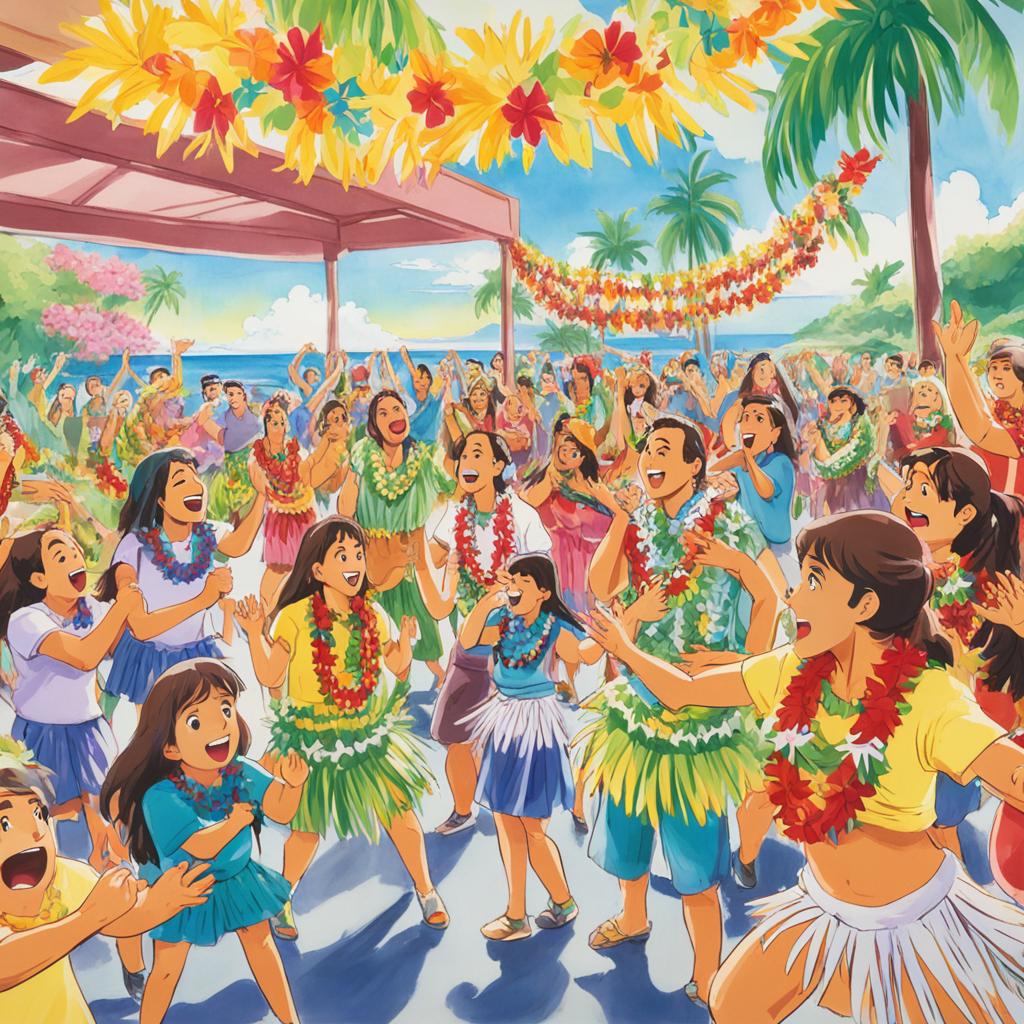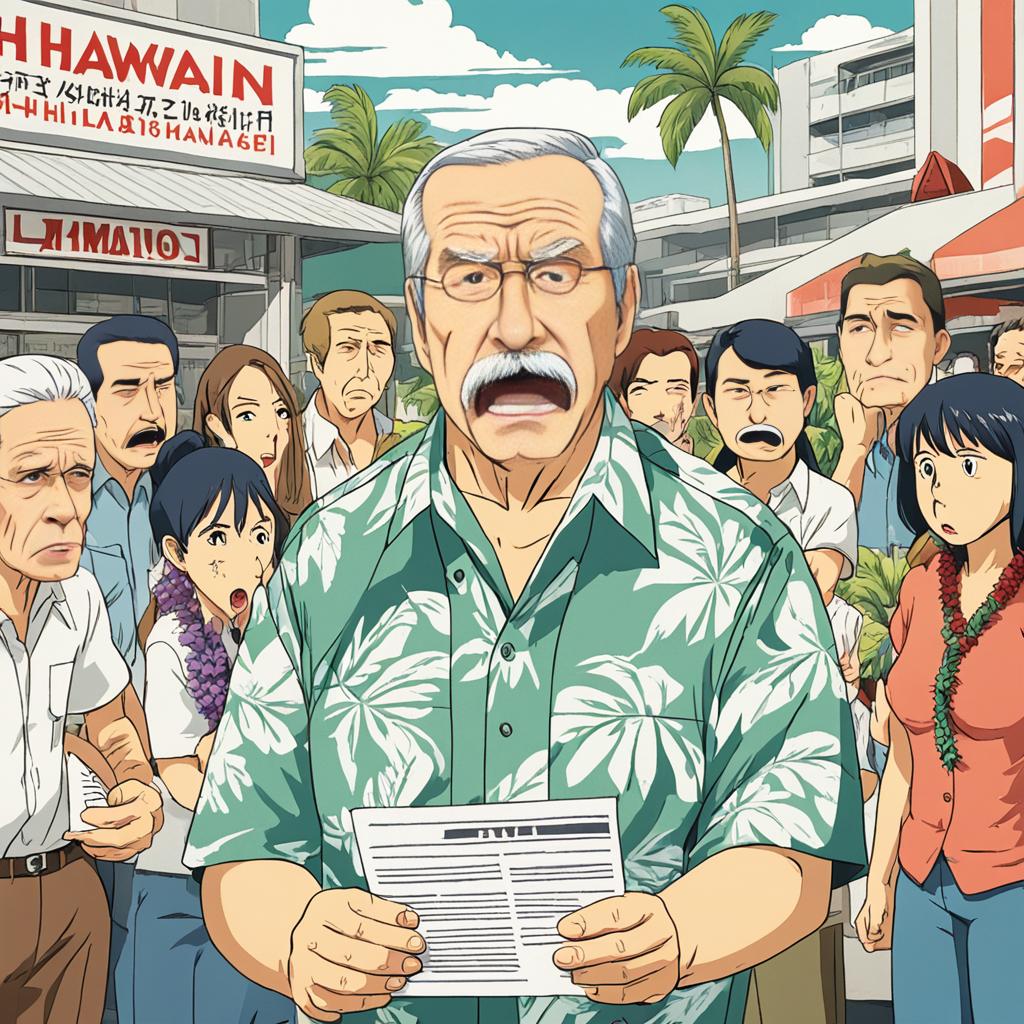Have you ever wondered about the status of the Hawaiian language? Did you know that it was once banned from school instruction? Many people may not be aware of this historical fact, but it highlights an important chapter in the Hawaiian language’s journey towards revitalization and preservation.
In 1896, after the U.S. government illegally overthrew the Hawaiian government, the Hawaiian language was banned from being taught in schools. This act aimed to suppress the Native Hawaiian identity and culture. But has the ban on the Hawaiian language been lifted? Is it still prohibited in educational settings today?
In this article, we will delve into the fascinating history of the Hawaiian language, explore the efforts made to revive and preserve it, and examine its current legal status. Join us on this linguistic journey to uncover the truth about the Hawaiian language and its place in the vibrant culture of Hawaii.
The Hawaiian Language Revitalization Movement
In the 1970s, a movement began to revitalize the Hawaiian language. Hawaiian language activist Larry Kimura and student activists played a significant role in this movement. They started a radio program called Ka Leo Hawai’i, where they interviewed native language speakers. The show sparked interest and inspired people to learn and understand the Hawaiian language. This movement led to the creation of Hawaiian language immersion schools and the development of educational programs for all ages.
The Hawaiian Language Revitalization Movement brought attention to the rich cultural heritage and significance of the Hawaiian language. Larry Kimura, in particular, dedicated his life to preserving and revitalizing the language. He believed that the Hawaiian language was more than just words; it was a connection to identity, history, and ancestral heritage.
“When you lose your language, you lose your culture, you lose your identity, you lose your history,” Kimura once said in an interview.
Through grassroots efforts and community support, the movement gained momentum. The creation of Ka Leo Hawai’i radio program served as a platform to showcase the beauty and importance of the Hawaiian language. Listeners were captivated by the stories, songs, and insights shared by native speakers, igniting a passion to learn and embrace the language.
This movement’s impact extended beyond the radio show. Hawaiian language immersion schools became a central pillar in the revitalization efforts. These immersive educational institutions provided instruction entirely in Hawaiian, creating an environment for students to engage with the language daily. The success of these schools and the growing interest in the Hawaiian language prompted the development of educational programs for learners of all ages.
It is through the dedication and commitment of individuals like Larry Kimura and the collective effort of the community that the Hawaiian Language Revitalization Movement continues to thrive.
Below is a table showcasing the growth of Hawaiian language immersion schools:
| Year | Number of Hawaiian Language Immersion Schools | Number of Students |
|---|---|---|
| 1985 | 3 | ~150 |
| 1990 | 6 | ~300 |
| 1995 | 9 | ~450 |
| 2000 | 12 | ~550 |
| 2005 | 15 | ~800 |
| 2010 | 17 | ~1,000 |
| 2015 | 19 | ~1,700 |
| 2020 | 21 | ~2,000 |
Hawaiian Language Immersion Schools
The Hawaiian language immersion schools, known as Pūnana Leo, were established in the mid-1980s. These schools provide instruction entirely in Hawaiian, starting from preschool. Initially, there was no support or curriculum from the state, so the schools had to create their own resources.
Over the years, the number of Hawaiian language immersion schools has grown to 21, serving 2,000 students across the islands. The curriculum continues to expand as students progress through different grade levels.
| School Name | Location | Number of Students |
|---|---|---|
| Pūnana Leo O Honolulu | Honolulu | 150 |
| Pūnana Leo O Hilo | Hilo | 180 |
| Pūnana Leo O Maui | Maui | 120 |
| Pūnana Leo O Kauaʻi | Kauaʻi | 90 |
| Pūnana Leo O Molokaʻi | Molokaʻi | 80 |
At Pūnana Leo schools, students learn a variety of subjects, including math, science, and social studies, all taught exclusively in the Hawaiian language. The curriculum is designed to ensure students develop fluency and proficiency in the language while also building a strong foundation in academic skills.
Through language immersion, students not only become bilingual but also gain a deeper understanding of Hawaiian culture and traditions. The schools prioritize cultural values and practices, incorporating them into everyday teaching and learning experiences.
Benefits of Hawaiian Language Immersion Schools
- Preservation and revitalization of the Hawaiian language
- Increased cultural awareness and appreciation
- Enhanced cognitive abilities and academic achievement
- Development of a strong cultural identity and sense of belonging
- Preparation for future careers in fields related to Hawaiian language and culture
Growing Interest in the Hawaiian Language

The efforts to revitalize the Hawaiian language have ignited a growing interest in learning and speaking this unique and culturally significant language. According to a 2016 state government report, approximately 18,000 people in Hawaii speak Hawaiian at home along with English.
This surge in language learners can be attributed to the availability of language apps and online courses, which have made learning the Hawaiian language more accessible than ever before. These digital resources provide individuals with the flexibility to study at their own pace and from the comfort of their homes, allowing them to embark on a journey of discovering and embracing the richness of the Hawaiian culture.
The growing interest and participation in learning the Hawaiian language is a testament to the progress being made in preserving and promoting this ancient language. By equipping individuals with the linguistic skills to communicate in Hawaiian, we can ensure the language’s continued vitality and its crucial role in fostering a sense of identity and belonging within the Native Hawaiian community.
The Challenges Ahead

Despite the progress in revitalizing the Hawaiian language, there are still challenges ahead. Larry Kimura, a Hawaiian language advocate, believes that the language is still endangered and will take several more generations to become strong enough to survive. While there has been a significant increase in speakers, there is a need for the language to be spoken in everyday life, from parent to child and in public spaces. Continued effort and commitment are necessary to ensure the language’s survival and cultural significance.
One of the challenges is creating opportunities for the Hawaiian language to be spoken outside of formal education settings. While Hawaiian language immersion schools have played a crucial role in preserving and teaching the language, it is crucial for it to become more prevalent in everyday life. This can be achieved through community initiatives, cultural events, and promoting the use of Hawaiian language in various public spaces.
Another challenge is maintaining and expanding the resources available for learning and teaching the Hawaiian language. As more people show interest in learning the language, there is a need for comprehensive and accessible educational materials. This includes the development of online courses, language apps, and enrichment programs for learners of all ages.
Furthermore, the Hawaiian language faces the challenge of adapting to modern terminology and concepts. As technology advances and new ideas emerge, there is a need to incorporate these into the vocabulary and structures of the Hawaiian language. This requires collaboration between language experts, educators, and the Hawaiian community to ensure that the language remains relevant and adaptable.
| Challenges | Actions |
|---|---|
| Limited everyday usage | Promote speaking Hawaiian in daily life through community initiatives and events |
| Resource availability | Develop comprehensive online courses, language apps, and enrichment programs |
| Adapting to modern terminology | Collaborate to incorporate new concepts and ideas into the Hawaiian language |
Legal Status of the Hawaiian Language

The Hawaiian language holds a significant legal status in Hawaii, as it is recognized as one of the official languages according to the state constitution. This recognition has paved the way for the use of the Hawaiian language in various aspects of daily life, symbolizing its cultural importance and preservation efforts.
In practice, the Hawaiian language can be found in official documents, such as government publications and forms, showcasing its official status and the commitment to preserving the language. Additionally, street signs and public displays often incorporate the Hawaiian language, further demonstrating its esteemed position in the Hawaiian community.
Moreover, the Hawaiian language has made its mark in the financial realm. Banks in Hawaii accept checks written in the Hawaiian language, underscoring its significance and acceptance within the state’s legal and financial systems.
Despite these advancements, there are ongoing struggles to solidify the Hawaiian language’s official status in various sectors. Education, government agencies, and the legal system continue to face challenges in fully embracing and integrating the Hawaiian language.
Advocates for the Hawaiian language emphasize the need for stronger legal protections and increased support to ensure its continued preservation and growth. By advocating for increased recognition and resources, they strive to solidify the legal status of the Hawaiian language in all aspects of Hawaiian society, securing its rightful place as an officially recognized and respected language.
The Cultural and Political Significance
The revitalization of the Hawaiian language holds immense cultural and political significance, as it is intricately intertwined with the preservation of Native Hawaiian culture and identity. Language plays a pivotal role in shaping a people’s identity, and revitalizing a previously suppressed language serves as a catalyst for reclaiming cultural and political autonomy.
By revitalizing the Hawaiian language, the Native Hawaiian community not only strengthens their cultural heritage but also reclaims their political voice. The use of the language as a means of communication fosters a sense of unity and solidarity among the Native Hawaiian population, allowing them to assert their unique identity in the face of historical marginalization and oppression.
The resurgence of interest in the Hawaiian language has led to a deeper appreciation and understanding of Native Hawaiian history, traditions, and values. As more individuals seek to learn and speak the language, a bridge is being built between generations, preserving ancestral knowledge, and fostering a sense of pride in Native Hawaiian heritage.
Furthermore, the revitalization of the Hawaiian language has sparked a cultural renaissance, with traditional practices, arts, and ceremonies gaining renewed attention and appreciation. The language serves as a vessel for preserving and transmitting cultural practices, ensuring that they continue to thrive and evolve within the Native Hawaiian community.
The cultural and political significance of revitalizing the Hawaiian language cannot be overstated. It is a powerful tool in reclaiming Native Hawaiian identity, empowering the community to redefine their narrative, and creating a renewed sense of pride and self-determination.
Looking Ahead
As the future of the Hawaiian language hangs in the balance, it remains crucial to continue the ongoing efforts towards its preservation. While facing challenges, the progress made in revitalizing the language through the establishment of immersion schools, educational programs, and the growing interest among individuals is undeniably promising.
The Hawaiian language plays a significant role in the preservation of Native Hawaiian culture and heritage. By embracing it as an everyday language, future generations can ensure the perpetuation of this rich cultural identity. The collective hope is for the Hawaiian language to thrive, flourish, and become deeply ingrained in the lives of the Native Hawaiian people.
Recognition of the importance of preserving endangered languages is growing worldwide, providing momentum for the future of the Hawaiian language. The commitment to its revitalization through educational initiatives, technological advancements, and increased public support demonstrates the dedication to its preservation for years to come. By safeguarding the Hawaiian language, we are safeguarding a part of our collective history and honoring the language’s enduring legacy.


